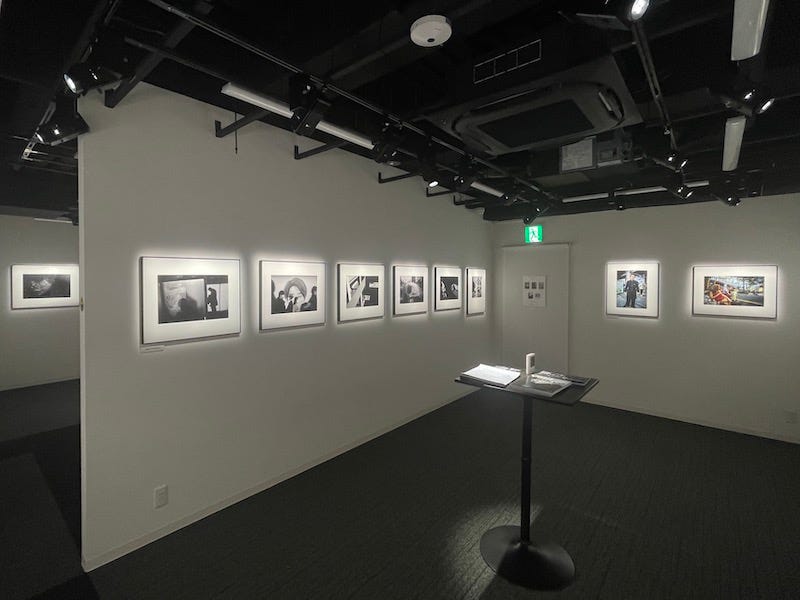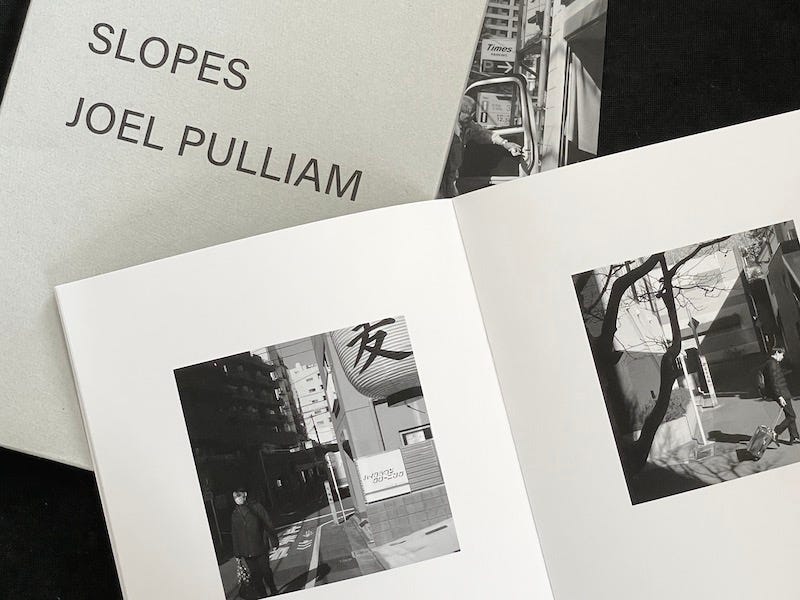29. Summer’s end.
Creativity.
Dear friends,
VoidTokyo’s exhibition at Hiko Hiko Gallery was by all accounts a great success. I am grateful to the gallery for the invitation, and also to VoidTokyo member Tadashi Yamashita for his skillful direction and management of the show. A thoughtful review in The Japan Times featured one of my photographs, noting that my work “lean[s] toward poetic distance and graphic compositions.”
The simultaneous release of my book, Slopes, at the same time made for a very busy month of July. Thank you to everyone who purchased a copy!
While the copies I had for direct sale sold out quickly (truly, thank you!), I still have a few that had been for sale at the exhibition and were returned to me after it ended. If you would like one, please let me know.
After the busy-ness of July, I was glad to take a break with a trip to California, to spend time relaxing and visiting old friends.
One friend I enjoyed catching up with is James Clark, co-founder of Brucato Amaro. Amaros are herbal liquors. Rather than imitating established brands such as Campari, James and his wife, Sierra, chose flavors from California’s native ingredients, such as Yerba Santa, walnuts and elderberries. Their liquors have won such award as Liqueur of the Year, Double Gold at the 2023 Bartenders Spirits Awards, and Best Herbal Liqueur, Double Gold, at the SF World Spirits Competition.
When I wasn’t talking to friends, I spent quite a lot of time reading, something I haven’t had the space to do for a while. I am deep into Ken Liu’s epic fantasy series, The Dandelion Dynasty. Ken draws from a variety of world literary traditions as well as on his experience and interests as a lawyer and a technologist. Since I am still not finished, I won’t offer a review, but so far I am in agreement with NPR that it is a “magnificent fantasy epic.”
Thinking about what James and what Ken have accomplished got me looking for lessons about creative success. As photographers, it is tempting to closely follow existing models, to aim for the kind of photographs that others have taken and that seem popular. And that’s a great way to train! Surely, though, excellence comes in breaking away from that, in pursuing a unique vision. Which doesn’t necessarily mean coming up with something new from thin air; often inspiration can be found in related, but untapped, sources.
Coming back home, we found that Japan’s record-breaking temperatures were continuing. Nevertheless, we braved the heat to enjoy our neighborhood’s summer festival, finally being held after three years of Covid cancellations.
This week, a typhoon blew through and, finally, the air seems to have cooled a bit. My children are now back at school, and I am returning to the groove of working on my long-term project about my neighborhood. I should have more to announce about that soon.
This fall, I am looking forward to two new photobooks by Takashi Homma. The first one, Tokyo Olympia, is a continuation of his masterwork, Tokyo Suburbia, and focuses on the changing Tokyo landscape in preparation for the 2020 Tokyo Olympics. The second, Thirty-Six Views of Mount Fuji, is inspired by the well-known Hokusai series of woodblock prints. The photographs in it draw on a variety of stylistic techniques, such as pinhole photography and collage.
And finally, topping it all off, beginning in October Takashi Homma will have a solo show at the Tokyo Museum of Photography.
Takashi Homma is an endlessly inventive photographer in terms of both technique and content. I’m particularly fond of his series of photobooks with the same title and structure as Ed Ruscha’s artist books. Ruscha’s books have been important to me as I created Slopes and as I work on the books that follow.
I hope to tell you more about Homma’s new books and exhibition next month.
With best wishes,
Joel



